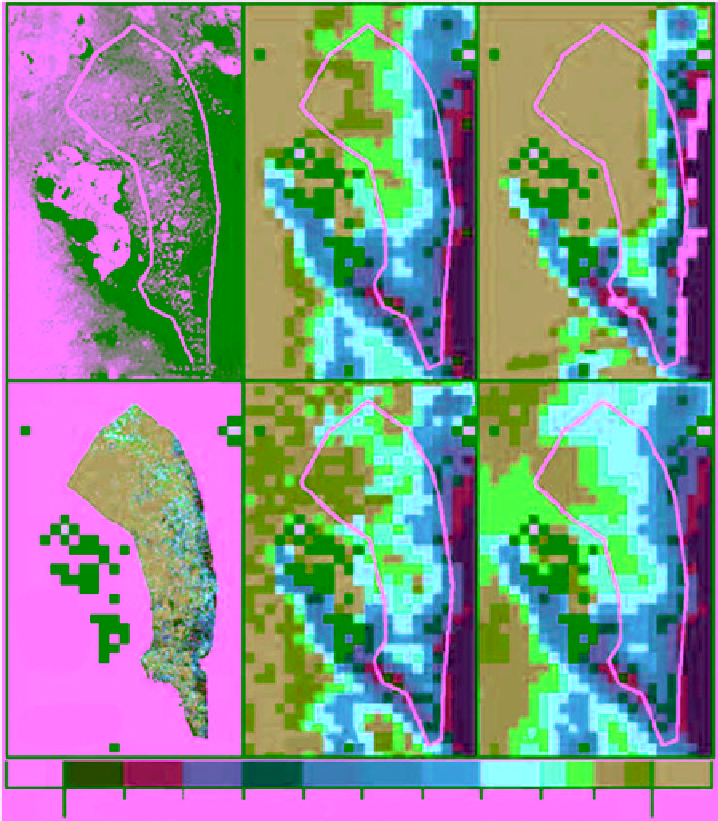Geology Reference
In-Depth Information
BT 72%
Cal/Val 81%
Channel 2
AVHRR
Novaya
Zemlya
Franz
Joseph
Land
AV 79%
NT2 74%
NT 68%
0
10
20
30
40
50
60
70
80 0
100
Figure 10.10
AVHRR channel 2 scene of the Barents Sea on 16 June 2001(top left) and ice concentration maps
from different algorithms (see text for algorithm labels). Average concentration is shown from each algorithm. The
clear‐sky region in AVHRR image, for which ice concentration is calculated, is outlined by the white contour.
Black corresponds to coast line pixles for which no concentration can be obtained from the passive microwave
data [
Meier
, 2005, Figure 5, with permission from IEEE].
the nearest point to the given observation. The simulated
observations represent the parameter space for the search.
They usually include brightness temperature or a few
derived parameter. The simulation is conducted using
a radiative transfer model with ice concentration and
atmospheric conditions that vary by fixed intervals.
(3) Solving a simplified version of a radiative transfer
equation that accounts for atmospheric influences and
incorporates ice concentration. This approach can be
used if the observations are affected by the atmosphere
(e.g., a high‐frequency PM channel such as the 89.0 GHz
on AMSR‐E). (4) Finding an optimal solution that mini-
mizes a cost function that usually represents the difference
between an actual and a modeled observation (which is
presented as a function of the ice concentration).
The mathematical scheme of selected algorithms rep-
resenting the above approaches are presented in the
next subsection. NASA Team (NT) and the Enhanced
NASA Team (NT2) algorithms represent the first and
second approaches, respectively. The ASI algorithm
represents the third approach. The fourth approach
is represented by the ECICE algorithm and a new
method that determines the concentration based on
the spectrum of microwave surface emissivity from
NOAA's Advanced Microwave Sounding Unit (AMSU).
Outlines of other algorithms; namely NORSEX, BS,
N‐90, Cal/Val, BRI, and TUD are presented in
Andersen
[2000]. Earlier summaries of NORSEX, NT, Mass‐
AES, BS, and AES‐York algorithms are presented in
Steffen et al
. [1992].

